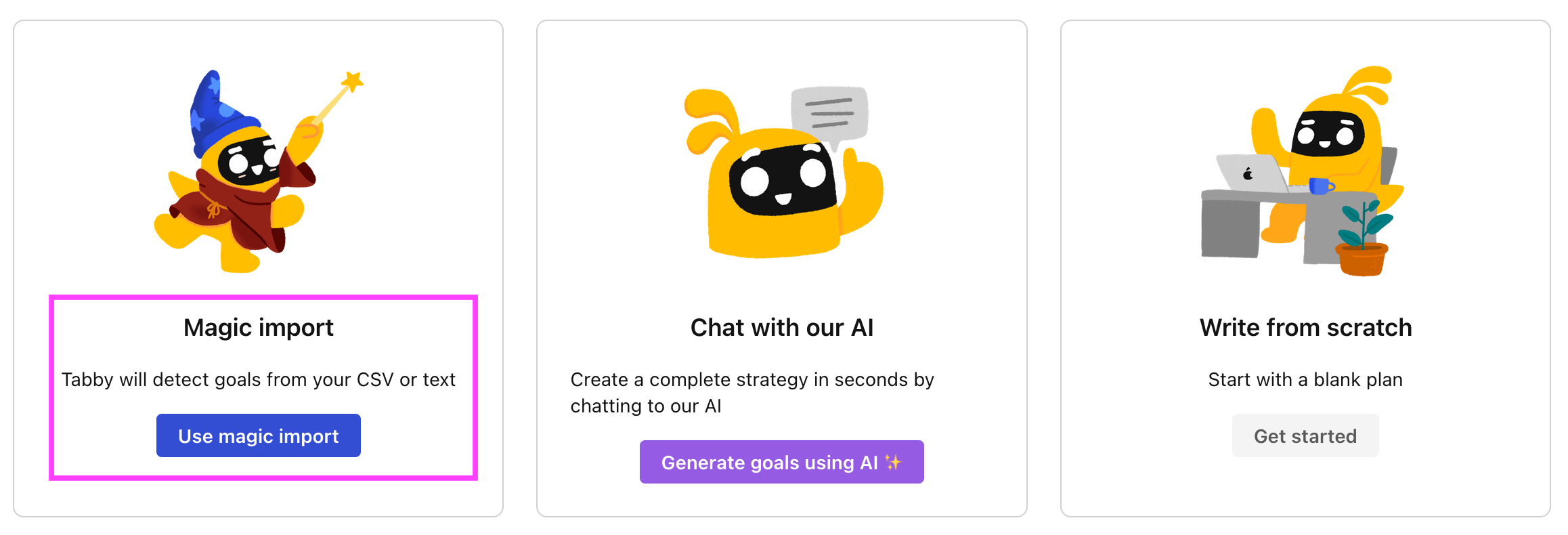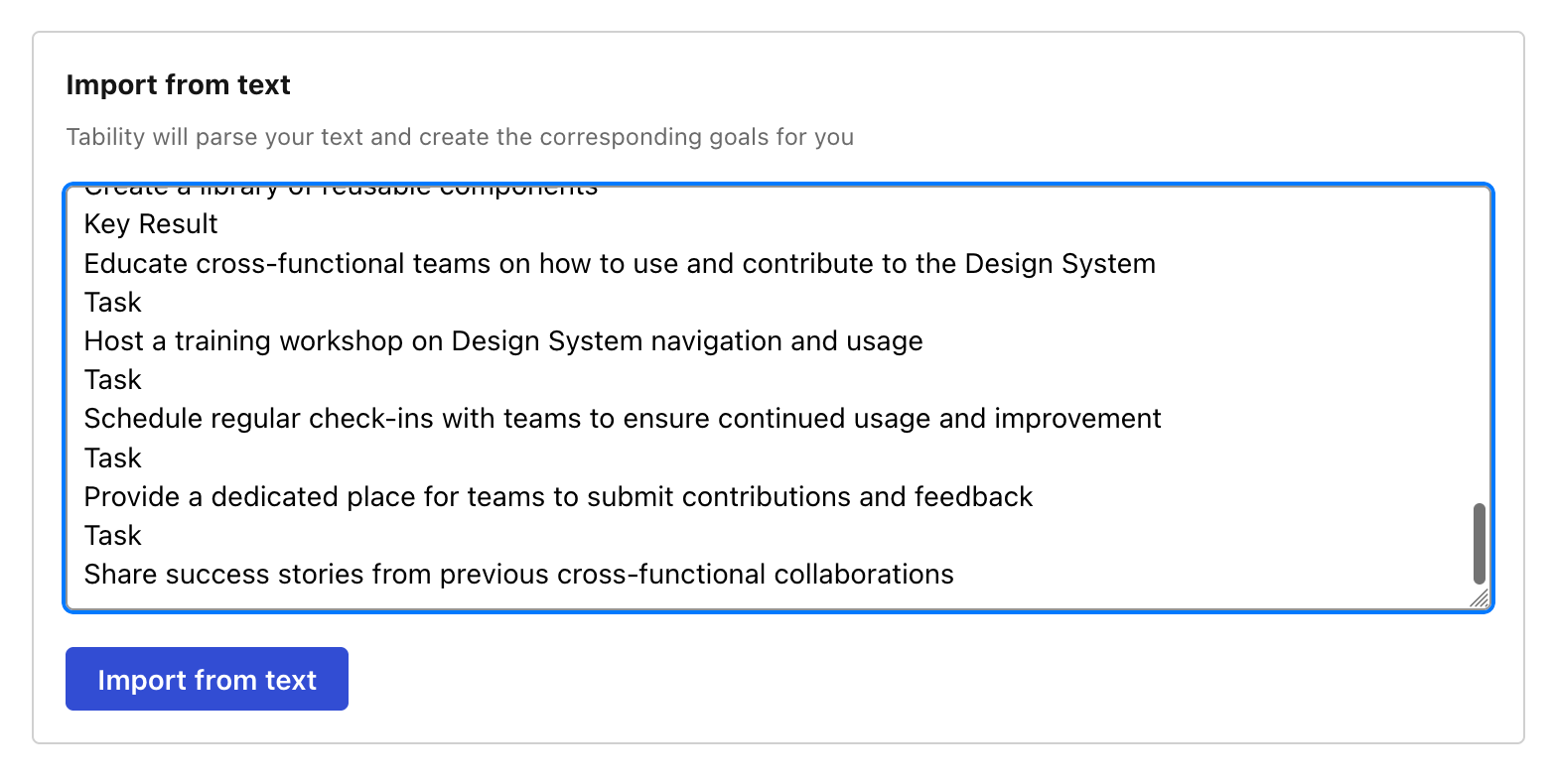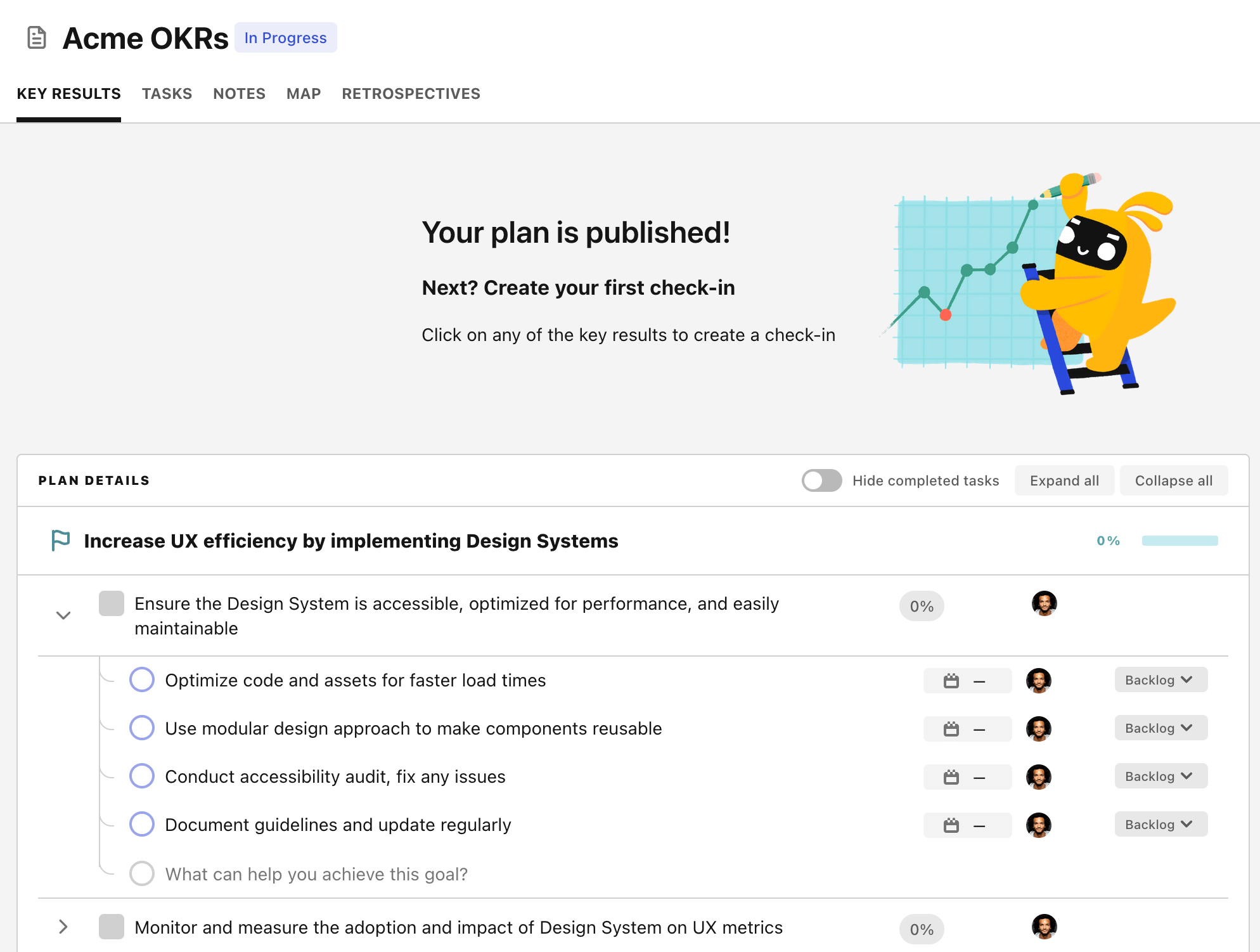OKR template to expand client base by 5 members
Your OKR template
A secondary outcome is to convert 33% of identified potential clients into actual clients. This will be done by developing a targeted marketing strategy and enhancing the current service package to incentivize conversion. Following up on pitches in a personalized manner is another key initiative.
Identifying another 15 potential clients through networking and cold-calling is another sub-objective. Initiatives to reach this goal consist of initiating cold calls to potential clients, research and creating a list of 15 potential clients, and setting up and attending networking events.
Overall, the OKR revolves around customer acquisition and retention, the expansion of the client base, and increased satisfaction through enhanced customer service and relationship management. Accomplishing these targets would subsequently lead to business growth.
ObjectiveExpand client base by 5 members
KRMaintain 90% retainer rate for new clients
Implement a robust client feedback and improvement system
Conduct regular client relationship management sessions
Provide excellent customer service to ensure client satisfaction
KRConvert 33% of identified potential clients into actual clients
Develop a targeted marketing strategy for potential clients
Enhance current service package to incentivize conversion
Organize personalized follow-ups for pitches
KRIdentify 15 potential clients through networking and cold-calling
Initiate cold-calling to the potential clients
Research and create a list of 15 potential clients
Set up and attend networking events
How to edit and track OKRs with Tability
You'll probably want to edit the examples in this post, and Tability is the perfect tool for it.
Tability is an AI-powered platform that helps teams set better goals, monitor execution, and get help to achieve their objectives faster.
With Tability you can:
- Use AI to draft a complete set of OKRs in seconds
- Connect your OKRs and team goals to your project
- Automate reporting with integrations and built-in dashboard
Instead of having to copy the content of the OKR examples in a doc or spreadsheet, you can use Tability’s magic importer to start using any of the examples in this page.
The import process can be done in seconds, allowing you to edit OKRs directly in a platform that knows how to manage and track goals.
Step 1. Sign up for a free Tability account
Go tohttps://tability.app/signup and create your account (it's free!)
Step 2. Create a plan
Follow the steps after your onboarding to create your first plan, you should get to a page that looks like the picture below.

Step 3. Use the magic importer
Click on Use magic import to open up the Magic Import modal.
Now, go back to the OKR examples, and click on Copy on the example that you’d like to use.

Paste the content in the text import section. Don’t worry about the formatting, Tability’s AI will be able to parse it!

Now, just click on Import from text and let the magic happen.

Once your example is in the plan editor, you will be able to:
- Edit the objectives, key results, and tasks
- Click on the target 0 → 100% to set better target
- Use the tips and the AI to refine your goals
Step 4. Publish your plan
Once you’re done editing, you can publish your plan to switch to the goal-tracking mode.

From there you will have access to all the features that will help you and your team save hours with OKR reporting.
- 10+ built-in dashboards to visualise progress on your goals
- Weekly reminders, data connectors, and smart notifications
- 9 views to map OKRs to strategic projects
- Strategy map to align teams at scale